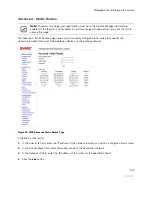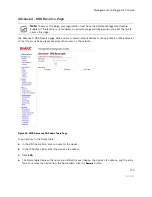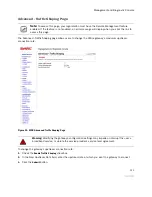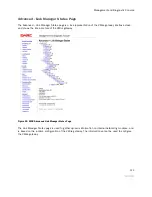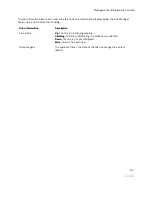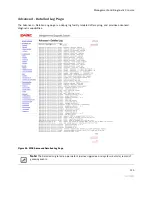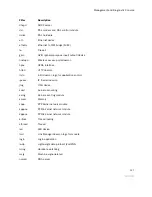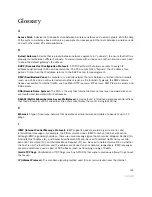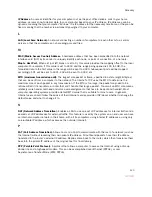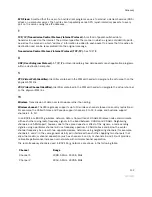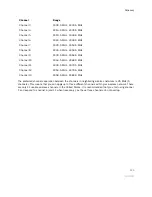
Glossary
131
PPPoA (Point-to-Point Protocol over ATM).
A specification for connecting multiple computer users on an
Ethernet LAN to a remote site through common customer premises equipment (such as a modem). PPPoA
combines the Point-to-Point Protocol (PPP), commonly used in dialup connections, with the ATM
(Asynchronous Transfer Mode) protocol, which supports multiple users in a LAN.
PPPoE (Point-to-Point Protocol over Ethernet).
A specification for connecting multiple computer users on
an Ethernet LAN to a remote site through common customer premises equipment (such as a modem).
PPPoE combines the Point-to-Point Protocol (PPP), commonly used in dialup connections, with the Ethernet
protocol, which supports multiple users in a LAN.
Protocol Timeout.
The amount of time (in seconds) during which a connection in the specified range
remains open when there is no data transfer. After a connection has been established on a given port, the
sender and receiver usually determine when the session is finished and the connection is closed. However,
if the connection is left open and data transfer stops, the system must eventually close the connection and
reclaim the resources in order to protect your network. In some cases, the system might close the
application during normal operation (for example, if there is a long pause between data transfer). If this is
the case, lengthening the timeout may help.
PVC (permanent virtual circuit).
A virtual circuit that is permanently available. Used to establish
connections between hosts that communicate frequently.
R
Router.
The central switching device in a packet-switched computer network that directs and controls the
flow of data through the network.
S
Subnet Mask.
The IP addressing system allows subnetworks or “interchanges” to be created, and devices
numbers or “extensions” to be established within these subnetworks. These numbers are created using a
mathematical device called a subnet mask. A subnet mask, like the IP address, is a set of four numbers in
dotted decimal notation. Subnet masks typically take three forms:
•
255.0.0.0
•
255.255.0.0
•
255.255.255.0
The number 255 “masks” out the corresponding number of the IP address, resulting in IP address numbers
that are valid for the network. For example, an IP address of 123.45.67.89 and a subnet mask of
255.255.255.0 results in a sub network number of 123.45.67.0 and a device number of 89.
The subnet mask used for the network typically corresponds to the class of IP address assigned, as shown
in the following table.
IP Address Class
Dotted-Decimal Notation Ranges
Corresponding Subnet Mask
Class A
1.xxx.xxx.xxx to 126.xxx.xxx.xxx
255.0.0.0
Class B
128.0.xxx.xxx to 191.255.xxx.xxx
255.255.0.0
Class C
192.0.0.xxx to 223.255.255.xxx
255.255.255.0
Содержание Gateway None
Страница 1: ...2Wire Gateway User Guide ...


